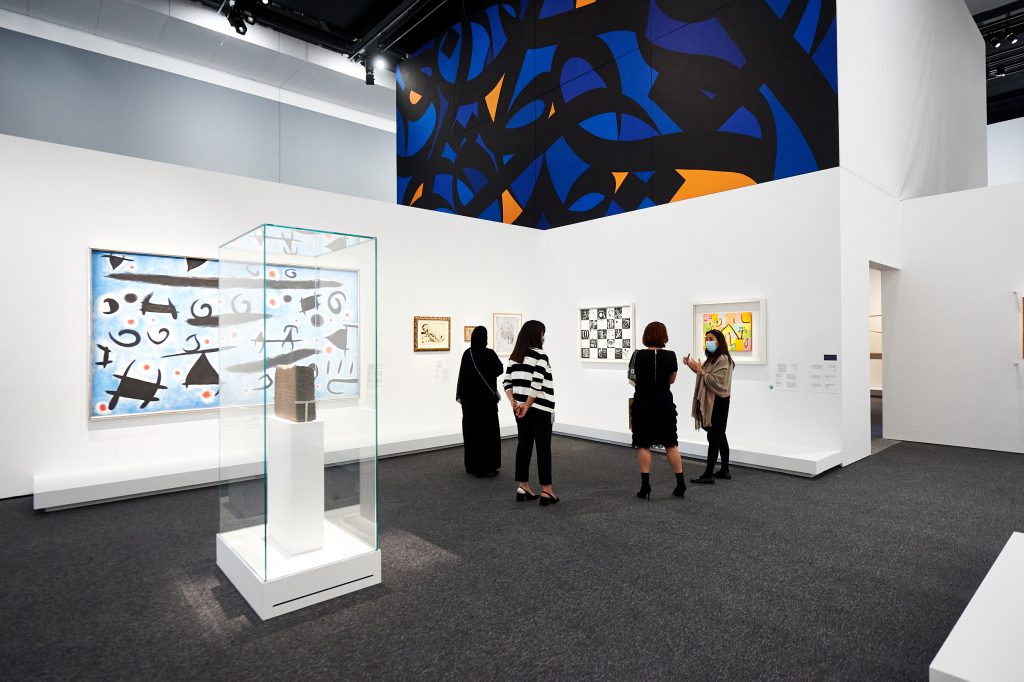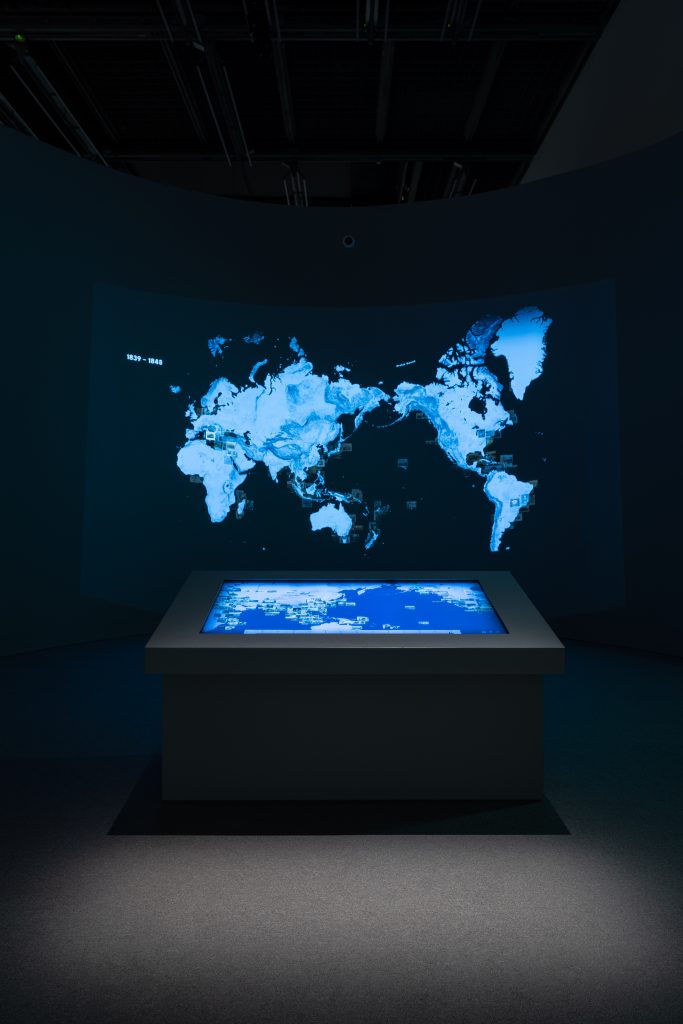Museums face complex challenges. As places where our historic heritage is preserved and where artworks are showcased, their scientific and cultural dimensions are fundamental. They play an important educational, social, and economic role, and they are drawn into debates on key social issues. Some of these issues concern them directly, while others lie outside their scope—but they are questions that no museum can avoid: inclusiveness, sectarianism, restitution, climate change, and so on.
Their complexity means that these questions are tackled by experts, who tend to forget what is essential—namely that museums are for the general public.
We work for the public, and the visitor is our central concern. This may seem obvious as, armed with statistics, we trumpet our successes and our visitor footfall. The risks we refer to are things like overcrowding and commercialization. The reality, however, is very different.
All too often, museums stand empty. A recent study on cultural practices carried out by the French Ministry of Culture shows that 71% of French adults never set foot in museums. This study, carried out every ten years, highlights long-term trends: in 1974 the figure was 72%. Progress has indeed been disappointing given that so many major new museums have opened over the past fifty years: the Pompidou Centre, the Musée d’Orsay, the Musée du Quai Branly, Louvre Lens and Pompidou Metz to name but a few.
This is all the more disappointing as, in parallel with the emergence of so many new museums, increased emphasis on mediation and a new focus on artistic and cultural education in schools were supposed to attract a broader spectrum of visitors.
And yet the endless queues at the entrance to the Louvre and popular exhibitions tend to refute this observation. How can a visible increase in footfall be squared with a deeper sense of disenchantment? Three factors come into play:
- School groups flock to museums; this is obviously a very good thing, although when children grow up most of them fail to
- Tourism attracts visitors from far This is also a very good thing, although people will visit a museum thousands of miles from home, they may never set foot in a local gallery or museum.
- Regular visitors keep coming back. This concerns a minority of visitors who make the most of the wide range of museums on offer. Cultured urbanites obsessed by how long they must wait in line to see the Morozov Collection are unaware of the chasm that separates them from the rest of
A “winner takes all” situation emerges. Major museums and prestigious exhibitions generate long queues, whereas elsewhere museums are empty and most people never visit them. We need to understand this apathy. The challenge is to spark interest and to foster a desire to discover what museums have to offer.
Somewhere in France, when the lockdown was over, I saw that the pavement cafés were full of people—but I was one of the few visitors to the remarkable museum nearby. Why should this be? Is the admission fee too expensive? Do people not have enough time on their hands? If so, why are theme parks, immersive experiences, and sporting events, which are more expensive and time- consuming, so popular?
For France Museums, which supports museum projects, this is a crucial question. How can we make people want to visit and return to museums? “The museum,” said Sherman Lee, “is a primary source of wonder and delight for mind and heart.” How can we ensure that his words continue to ring true?
We must hammer home the message that a museum is a place unlike any other. Its grand ambition—and its extraordinary presumption—is to defy time and space.
Michel Foucault coined the paradoxical concept of the heterotopia, or realized utopia. He believed that the museum, as an example of a heterotopia, “aims to enclose all times, all epochs, all forms and all tastes in one place, so as to constitute a place of all times which itself exists outside of time and is out of reach of its jaws”.
What can we learn from this? The museum must not become an ordinary place. It must offer wondrous experiences; it must provide insights into the mysteries of creation; it must invite us to embark on new journeys.

© Louvre Abu Dhabi, France Muséums, 2021. Réalisation Drôle de Trame
This is a daunting ambition. Though the museum must never be ordinary, each visitor must feel as if they are on familiar ground. The museum is a place for integration and sharing where the notion of community is key. It is a place that is open to difference and intelligence. It is a place of communion, not of luxury. This must be its fundamental approach at a time when fundamental values are being called into question: the equal right of all human beings to dignity, freedom of thought and expression, and respect for others. To paraphrase Roland Barthes: “The artwork puts no pressure on the viewer. It speaks to the truth of emotions, not of ideas: it is thus never arrogant, never coercive […]”.
The challenge that faces any museum is to avoid the idea that it is merely there to present a collection. Its artworks serve a much broader purpose: the museum uses them to create a sensory experience that conveys a particular message and brings stories to life. The curator and art historian Henri Loyrette often tells the story of the writer Charles Péguy, who went to the Louvre as a student and experienced what he called a “promotion of being” leading to an “immediate perception of the long and visible trajectory of humanity”.
It is our job, as museum professionals, to ensure that visitors can enjoy a similar experience. We must provide an environment that sparks the kind of aesthetic emotion that only the original artwork can make us feel. It is an environment that must welcome us, guide us, inspire us, excite us, and take us on a journey. The way artworks are presented, the place where they are displayed, the interpretive resources that enrich the experience, and the visitor journey comprising all the different aspects of that experience. All of these components together make up a coherent system.

It is an open-ended system: visitor expectations today are not the same as they were fifty years ago. It is a system that must reach beyond the boundaries of the museum: the idea is to reach out locally and globally using the range of tools that modern technology has made available. It is an open system that can host all forms of art: music, film, dance, theatre and so on.
For the magic to work, the relationship between the visitor and the artwork must be nurtured and never curtailed. The artwork must function as an artwork: as Nelson Goodman says, “while most of the users of a library know how to read the books there, many visitors to the museums do not know how to see, or how to see in terms of, the works there. […] Making works work is the museum’s major mission […] The myths of the innocent eye, the insular intellect, the mindless emotion are obsolete. Clearly, works of science work in this way too, as do the collections of museums of science and natural history […] Museums of different kinds do have some different problems, but their common end is improvement in the comprehension of the worlds we live in. Somehow, the immutable work and the volatile viewer must be reconciled. Attention must be held long enough for a work to work”.
To paraphrase Roland Barthes who, referring to works of literature, recalled the importance that should be accorded to the reader: “An exhibition is made up of multiple works from several cultures that enter into a dialogue, parody one another or compete with one another; but there is a point at which this multiplicity comes together: that point is not the curator but the viewer (…) The unity of an exhibition lies not in its origin, but in its audience”.

Golden age (2019)
© Department of Culture and Tourism Abu Dhabi Photography by Jonathan Gibbons
Interactive world map from the Louvre Abu Dhabi Exhibition : Rembrandt, Vermeer & the Dutch Golden Age 2019 (Department of Culture and Tourism Abu Dhabi Photography by Jonathan Gibbons)
The challenge facing the museum is to include all visitors while fighting tooth and nail against the dangers of sectarianism and essentialism. Equality in dignity and rights, a living principle of humanism, is reflected in the equality in dignity and rights of every artwork. This in turn is a living principle of the universalism embodied by the Louvre Lens and Louvre Abu Dhabi.
The “heterotopian” museum is a hybrid, welcoming, radiant, exacting, enjoyable and scholarly place. Today’s museum, if it intends to open its arms to the public, is not like the museums of yesteryear. It is a complex system that requires cutting-edge expertise of a kind offered by France Museums.
Set up to bring together French national museums to work on the pioneering Louvre Abu Dhabi project, France Muséums capitalizes on this unparalleled experience, using its expertise and that of its partner network to run museum- and heritage-related projects. The shortcomings of many museum projects are not due to lack of resources, ambition, or talent; they arise from a failure to ask questions, to define expectations and to formulate goals. The job of France Museums is to help support projects from concept to implementation. These challenges have led us to organize a symposium in the French Pavilion at Expo 2020 Dubai, accessible both physically and remotely, on January 15, 2022. This will be an ideal opportunity for numerous experts in the field to shed new light on these questions.
Author’s bio: Herve Barbaret is the Chief Executive Officer of France Museums. Prior to his appointment at Agence France-Muséums, Barbaret has been General Secretary at the French Ministry of Culture since June 2017. He has been assisting the French Minister of Culture by both managing the ministry, which employs 750 public servants, and implementing transversal cultural policies. Throughout his career, he has developed on-the ground managerial expertise as well as a high-level relational skill in both administrative and business sectors.
Hervé Barbaret has more than 15 years of experience in the cultural field where he held various positions such as Deputy General Director at the Cité de l’architecture et du Patrimoine (2004-2007, a cultural institution in charge of promoting architecture), Managing Director of Musée du Louvre (2009-2015), member of the Boards of Directors of Agence France-Muséums, Louvre Lens and of the Louvre Endowment Fund. He has been involved in major cultural projects: the creation of the Cité de l’architecture et du patrimoine, the Musée du Louvre’s Department of Islamic Art, the birth of Louvre Lens and Louvre Abu Dhabi, a project he has been supporting during its prefiguration phase and cherishing for many years.


